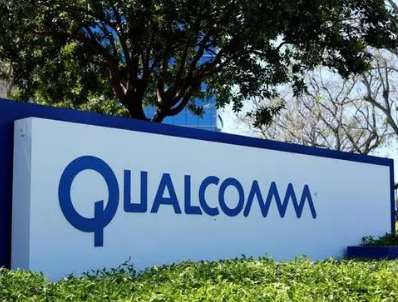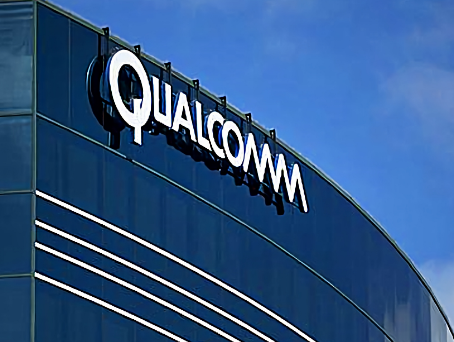- Ameya360 Component Supply Platform >
- Trade news >
- AI Gets $100M Bid from Qualcomm
AI Gets $100M Bid from Qualcomm
Qualcomm launched a $100 million venture fund at an event here where the level of enthusiasm for machine learning ran high. China’s SenseTime alone talked about taking in $3 billion for its platform, and others gave examples of AI quadrupling productivity and saving lives.
The combination of 5G and AI is central to Qualcomm’s corporate strategy in the wake of its failed merger with NXP and slowing smartphone growth. The combination of the two technologies will expand the company’s addressable market to a smart internet of things, said chief executive Steve Mollenkopf.
“The funnel of companies we talk to has widened” to include industrial, automotive, and health-care companies, among others, he said.
“Today, the premier device that collects and controls data is the smartphone where Qualcomm is the leader, but in time, that will change to IoT,” said Keith Kressin, senior vice president of product management, adding that the company will unveil a Snapdragon next week with expanded DSP, GPU, and custom blocks for AI.
The $100 million fund represents a small slice of more than $1 billion that Qualcomm Ventures has invested to date in more than 150 companies, including China handset maker Xiaomi. Qualcomm was also an early investor in Brain Corp., a developer of autonomous navigation systems.
The first investment of the new fund went to AnyVision. The software startup’s tools extend traditional image recognition to analyze behaviors to determine, for example, if two people are in conversation.
SK Telecom shares Qualcomm’s 5G + AI strategy. It aims to launch 5G services in South Korea on Dec. 1 in Seoul and six other cities, focusing in part on services such as computer vision for business customers such as Myunghwa Industry Co. Ltd., an auto parts company.
“High-resolution, multi-angle photos of products on conveyor belts will be sent to the cloud server via 5G mobile routers, and the server’s high-performance AI will instantly scan the photos to check for defective products,” said the carrier in a press statement.
AI could ask for no more enthusiastic proponent than Stanford professor and serial entrepreneur Sebastian Thrun, who spoke at the Qualcomm event.
Machine learning will help and augment people, not threaten them, he argued, giving an example from his startup Cresta, whose software quadrupled productivity of salespeople in field trials.
One student of Thrun created a database of images of skin cancers. Using machine learning, it was able to speed up diagnosis of malignant cancers, he said. He also shared experiences using AI for self-driving cars and his latest startup, KittyHawk, devoted to self-flying taxis and personal planes.
“AI is a wide-open field,” he told a crowd of about 100 venture capitalists and entrepreneurs. “For example, we still don’t have good hardware and software to train on a phone or across many phones. There are opportunities to transform just about every business.
“I don’t think AI is overhyped; if I’m not mistaken, it’s going to be the next book,” he added, comparing the discovery of deep learning to the printing press.
In China, SenseTime raised $3 billion to date to fund its company’s AI software platform and three private data centers that run it. The centers in Beijing, Shanghai, and Shenzhen have a combined processing power of about 150 petaflops, nearly as much as the world’s largest supercomputer, said George Huang, the startup’s head of international business.
SenseTime claims that it competes with the world’s largest data center operators in performance on deep learning. (Image: SenseTime)
Like Qualcomm and Thrun, the China startup is pursuing a waterfront of 18 vertical markets including smart cities, manufacturing, financial services, and the smart home. It lays claim to having 700 partner and client relationships forged in its four years to date.
SenseTime helps companies develop their own applications and algorithms that run in its systems, often using its data sets geared for image and face recognition, natural-language processing, and other automated services.
Today, the company has a database of 2 billion images of 400 million people. “Next year, with our new algorithm, we target being able to accurately recognize one person in 100 million people,” said Huang. “That’s the population of Japan.”
Online messageinquiry
- Week of hot material
- Material in short supply seckilling
| model | brand | Quote |
|---|---|---|
| BD71847AMWV-E2 | ROHM Semiconductor | |
| RB751G-40T2R | ROHM Semiconductor | |
| MC33074DR2G | onsemi | |
| TL431ACLPR | Texas Instruments | |
| CDZVT2R20B | ROHM Semiconductor |
| model | brand | To snap up |
|---|---|---|
| BU33JA2MNVX-CTL | ROHM Semiconductor | |
| TPS63050YFFR | Texas Instruments | |
| ESR03EZPJ151 | ROHM Semiconductor | |
| STM32F429IGT6 | STMicroelectronics | |
| BP3621 | ROHM Semiconductor | |
| IPZ40N04S5L4R8ATMA1 | Infineon Technologies |
- Week of ranking
- Month ranking
Qr code of ameya360 official account
Identify TWO-DIMENSIONAL code, you can pay attention to


Please enter the verification code in the image below:

























